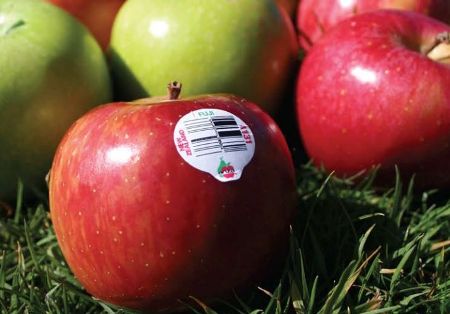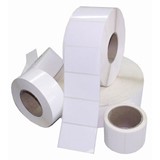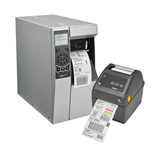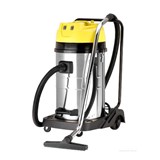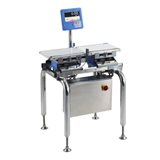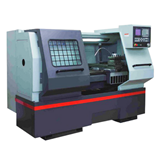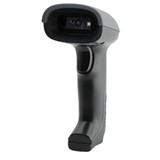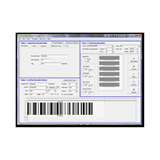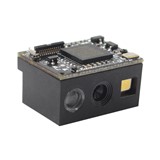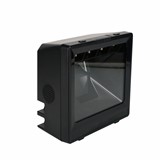GS1 DataBar barcodes have been developed to deliver enhanced product identification at retail point-of-sale (POS), particularly for small or hard-to-mark products that couldn't previously be identified by existing barcodes.
According to GS1 Australia DataBar allows more information – weight, expiry date, batch and serial numbers – to be carried on a retail POS barcode. As GS1 DataBar takes up less space than existing barcodes, it also allows more room on packaging for branding and messaging.
Although the GS1 DataBar group of barcodes has been in use under bilateral agreement between trading partners since 2010, understanding of the symbology by Australian manufacturers is still limited.
However in a little over a month's time the GS1 DataBar will become an open global standard, and for retailers and manufacturers who haven't already prepared their business for DataBar's wide scale roll-out, now is the time to familiarise yourself with the technology and what you need to do to get DataBar-ready.
Mark Dingley is the general manager of operations at Matthews Australasia, one of Australia's foremost providers of intelligent product identification and inspection solutions. Dingley is also chairman of the Australian Packaging and Processing Machinery Association (APPMA), and spoke to IndustrySearch about the impending arrival of the GS1 DataBar.
IndustrySearch: DataBar comes into full effect from 2014, how prepared are food manufacturers and indeed the retailers for its introduction?
Mark Dingley: The larger retailers and manufacturers are certainly gearing up for GS1 DataBar. That's typical of most innovations though: the larger operations tend to 'horizon spot', see what trends are coming up and work out if it will benefit them.
If it does, they usually have the resources to put into making it happen. They also usually have the supply-chain pull to say 'make these changes please' to their suppliers. However, you don't have to use DataBar; it depends on your own supply chain.
What's happening in 2014 is that DataBar will be an 'open, global standard'. That means there's an expectation that if your supply chain is using them, you can print GS1 DataBar codes if you're a manufacturer or scan them if you're a retailer.
It is definitely worth considering being ready for GS1 DataBar symbology now. If you're a manufacturer who wants to get an 'edge' in the market and be ready for any future announcements by the major retailers — especially in fresh products — you really will need DataBar-compatible coding and labelling equipment.
Like any capital purchase, check it out thoroughly for just how this coding equipment will benefit your business now, and in the future. Don't rush a decision; it doesn't benefit your business in the long term.
IS: I understand DataBar is already in use in some instances, what is the adoption level at this point?
MD: In Australia, the adoption level is pretty low at this point, but that will change come 2014. There is definitely a lot of work being done right now by GS1 with the major supermarkets to understand DataBar's benefits over the current EAN13 static barcodes on consumer units.
Once these benefits are realised, and infrastructure updated at point of sale to handle DataBar scanning, the adoption will dramatically increase.
IS: What has delayed the adoption of this technology by the manufacturers?
MD: Probably the fact it's new, and certainly the fact it's not mandatory, it's just another option. As manufacturers come to understand the benefits, I'm sure we'll see adoption levels race up.
IS: DataBar has huge potential to transform the way retailers and manufacturers do business – how?
MD: Space and the information contained are two major aspects here, and these will have positive impacts in traceability, improved inventory control, better sales records and eliminating manual-input errors.
In particular with fresh, short shelf-life products, where the advantage of potentially adding 'use-by' and 'sell-by' to the barcode has very positive benefits to inventory control, and reducing shrinkage at back-of-store due to expired products.
A GS1 DataBar is physically smaller than a EAN13 bar code. This has benefits for both retailers and manufacturers.
Then there are products that typically aren't barcoded, but have a PLU code which is manually entered at point of sale. Loose, fresh fruit and vegies are the major things here. Speeding up the POS process and removing the potential for error will have huge benefits for retailers in the future.
For manufacturers, label 'real estate' is worth a premium; no manufacturer wants to use up all the label area on legal requirements or trade necessities, they'd rather use it to create shelf appeal and communicate in more detail with their customers.
So less space is one benefit, but the fact DataBar contains so much more 'dynamic' information than an EAN13 bar code is a second way this symbology has the potential to transform business operations — and this will benefit both retailers and manufacturers.
DataBar can include information such as expiry dates, sell-by dates, weights, batch numbers, serial numbers, and so on, meaning retailers and manufacturers can use this space to meet future regulatory requirements or future customer demands — or both.
IS: Can you give us any real world examples of how DataBar has been used?
MD: There's a great example of two top Japanese retailers, Bunkado and Beisia, who ran a pilot back in 2008. They used DataBar on sushi and sashimi — classically short shelf-life fresh products. Discount information was encoded into the symbol, so a discount was automatically applied to any product nearing the end of its shelf life rather than staff having to muck around at POS, or other staff needing to check inventory and manually apply discount labels.
If someone tried to buy an expired product, it would be rejected, and POS staff would instantly know to sell a fresh replacement instead. This has benefits for stock inventory management, and customer experiences with only receiving excellent quality produce.
Along with improved inventory management, traceability is another important benefit.
Take the example of heirloom tomato growers in the USA. Currently, they use a four-digit PLU label — #3423. So every single tomato from every single US heirloom grower has the same label. The problem for retailers is they don't know which tomato came from which supplier, so they don't know which ones are selling better, or which are sitting there and maybe being thrown out.
However, GS1 DataBar will allow retailers to track sales by individual supplier. So they can vastly improve inventory control, as well as eliminate manual data entry errors at POS.
Yet another benefit for fresh produce processors who supply retailers in different countries is that DataBar can use GTINs — or global trade item numbers — rather than say a local generic code. That means a much simpler labelling procedure.
IS: Will this technology ultimately replace the existing EAN13C barcodes?
MD: No, DataBar won't replace EAN13 barcodes entirely, they're just another option for trade items and I believe have a lot of benefits to both retailers and the manufacturers in fresh, short shelf-life products.
IS: If I'm a manufacturer and I haven't yet prepared my business for DataBar what do I need to do now?
MD: Firstly, check to see with your coding suppliers to ensure your existing equipment is 'DataBar ready'. If you have bought coding and labelling equipment in the past few years, you will most likely find that it is capable, so you may only need a firmware upgrade.
Then talk to your supply chain partners: do they intend using DataBar? Do your own analysis: will DataBar benefit your manufacturing business?
IS: As a manufacturer what questions do I need to ask of my technology supplier?
MD: Always implement a new technology because it benefits you, not 'just because you have to'. Sure, there will be times when a supply chain partner wants you to change something, but always, always find the way it will improve things for you — never just 'slap and ship' with product identification.
With that in mind, there are three things to ask your current technology provider: 1. is my existing equipment DataBar compatible? If the answer is 'yes', great, show me how to turn it on. If the answer is 'no' then do you have technologies that will print GS1 DataBar that are flexible enough to grow and adapt with my business in the future? I don't just want something for now.
And thirdly, just as importantly, how can you help me integrate my coding system, so my business can take advantage of using DataBar?
If you need more information on DataBar, or need to talk to an integration expert to determine if you can benefit from the new barcode technology, contact Matthews Australasia.

